
Castniidae, or castniid moths, is a small family of moths with fewer than 200 species: The majority are Neotropical with some in Australia and a few in south-east Asia. These are medium-sized to very large moths, usually with drab, cryptically marked forewings and brightly coloured hindwings. They have clubbed antennae and are day flying, and are often mistaken for butterflies. Indeed, some previous classification systems placed this family within the butterflies or skippers. The Neotropical species are commonly known as giant butterfly-moths, the Australian and Asian species as sun moths. The larvae are internal feeders, often on roots of epiphytes or on monocotyledons.
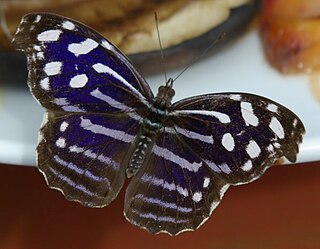
Biblidinae is a subfamily of nymphalid butterflies that includes the tropical brushfoots. This subfamily was sometimes merged within the Limenitidinae, but they are now recognized as quite distinct lineages. In older literature, this subfamily is sometimes called Eurytelinae.

Hedylidae, the "American moth-butterflies", is a family of insects in the order Lepidoptera, representing the superfamily Hedyloidea. They have traditionally been viewed as an extant sister group of the butterfly superfamily Papilionoidea, but a 2014 phylogenetic analysis has suggested Hedylidae is a subgroup of Papilionoidea, and not a sister group, and are more accurately referred to as butterflies rather than moths. They are represented by a single Neotropical genus Macrosoma with 35 currently recognized species.

The Haeterini are one of the smaller tribes of the Satyrinae in the Nymphalidae family. The tribe occurs exclusively in tropical rain forests in the Neotropical realm.

Callicore is a genus of nymphalid butterfly found in the Neotropical realm. This genus, like some related ones, was formerly lumped together as the paraphyletic Catagramma assemblage.

Myscelus is a Neotropical genus of skippers in the family Hesperiidae.

Consul, described by Pieter Cramer in 1776, is a South American nymphalid butterfly genus in the subfamily Charaxinae.
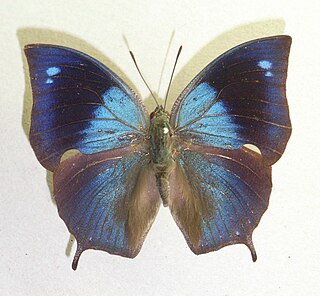
Memphis, described by Jacob Hübner in 1819, is a Neotropical nymphalid butterfly genus in the subfamily Charaxinae.

Azonax is a Neotropical genus of Firetips in the family Hesperiidae.The genus is monotypic containing the single species Azonax typhaon present in Mexico, French Guiana and Nicaragua.

Codatractus is a Neotropical and Nearctic genus in the family Hesperiidae (Eudaminae).

Ectomis is a genus of Neotropical and Nearctic butterflies in the family Hesperiidae (Eudaminae).
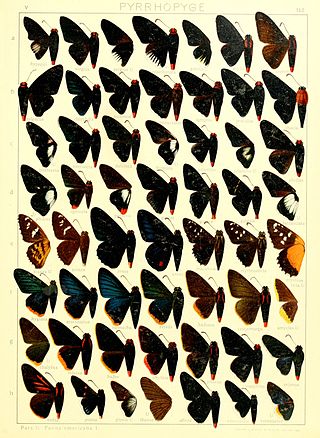
Jonaspyge is a Neotropical genus of firetips in the family Hesperiidae.

Telemiades is a genus of Neotropical butterflies in the family Hesperiidae.
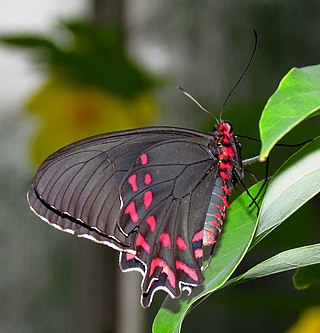
Parides photinus, the pink-spotted cattleheart, is a species of butterfly in the family Papilionidae. It was first described by Edward Doubleday in 1844.

Polygrapha is a Neotropical nymphalid butterfly genus in the subfamily Charaxinae.

Marpesia is a butterfly genus in the family Nymphalidae. The species of this genus are found in the Neotropical and Nearctic realms.

Dulcedo is a Neotropical butterfly genus from the subfamily Satyrinae in the family Nymphalidae. The genus is monotypic: its sole species is Dulcedo polita, which occurs from Nicaragua to Colombia.
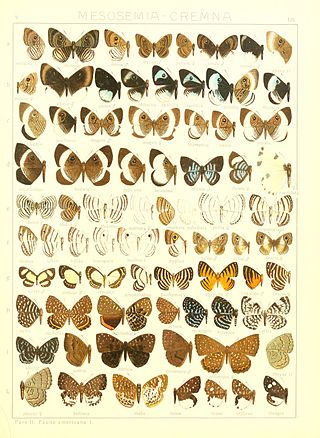
Napaea is a genus in the butterfly family Riodinidae present only in the Neotropical realm.
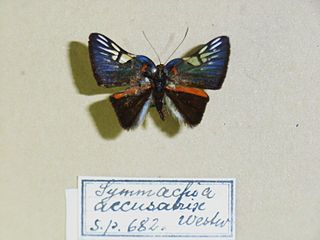
Symmachia is a genus in the butterfly family Riodinidae present only in the Neotropical realm.
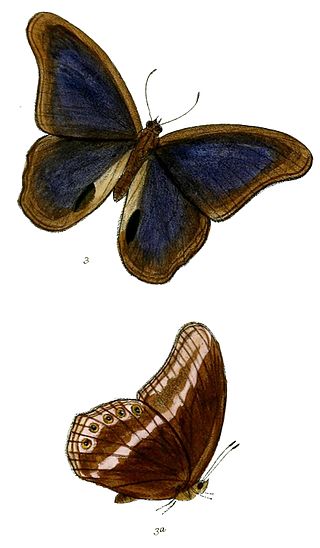
Coelites is a Southeast Asia genus of butterfly in the family Nymphalidae (Satyrinae)



















